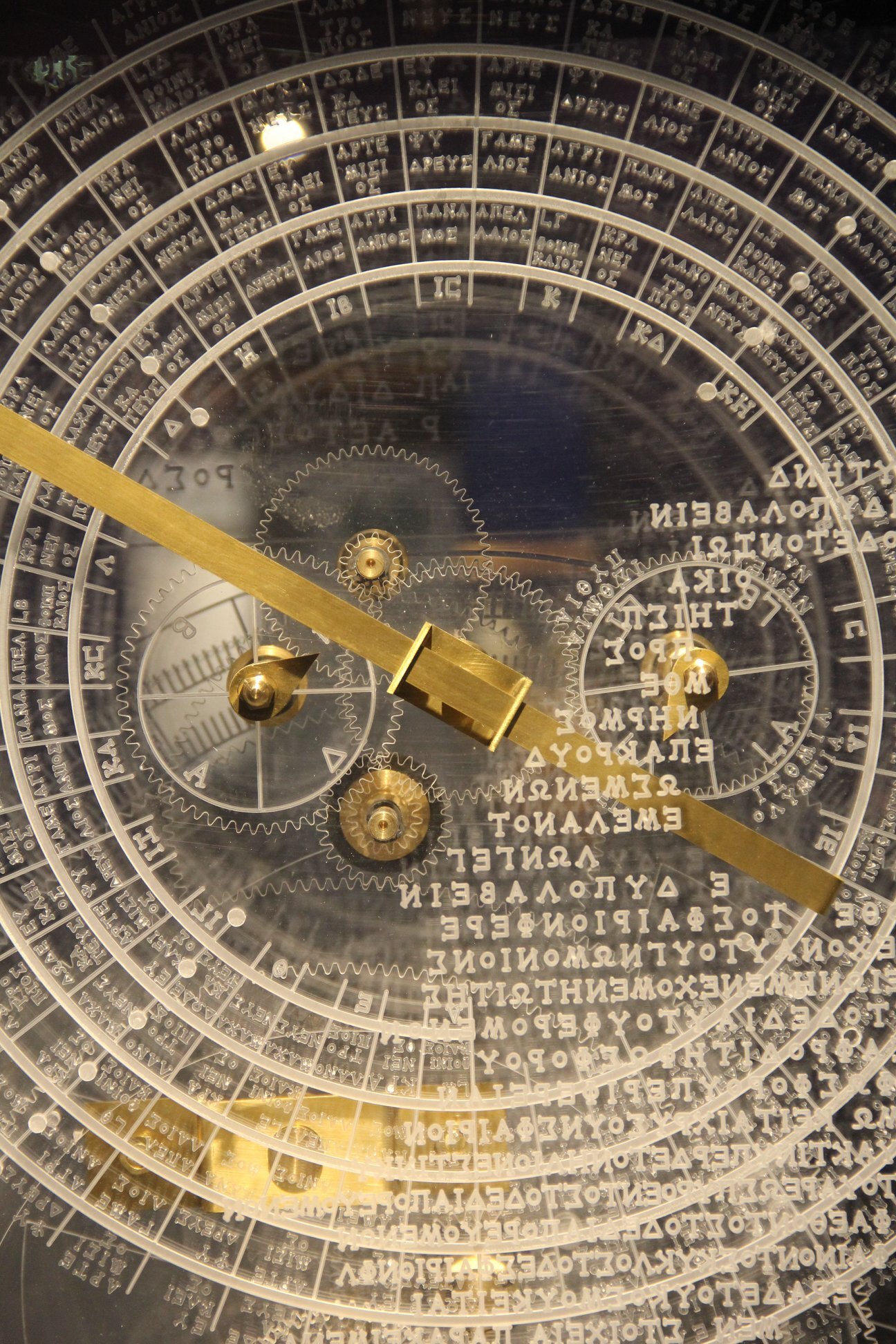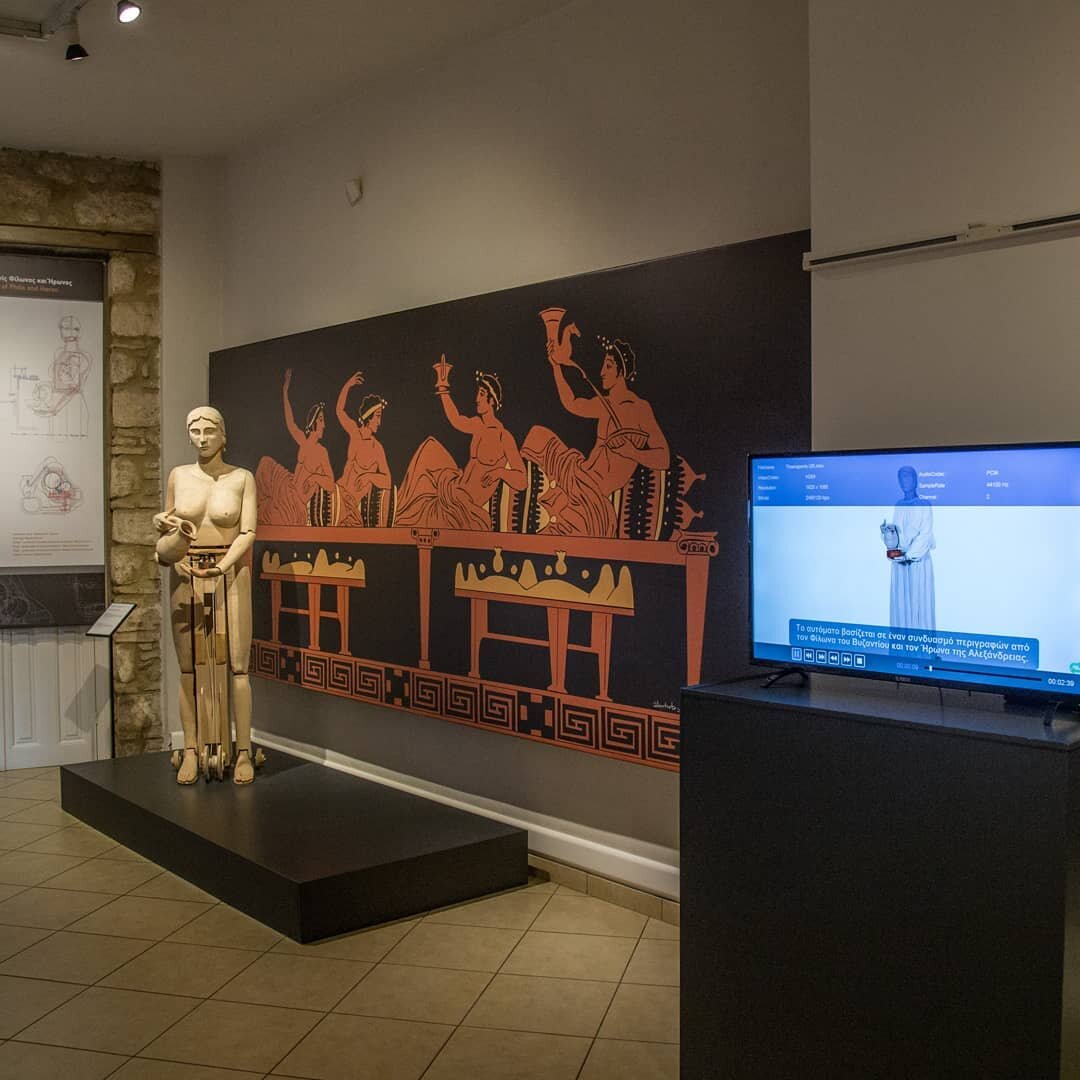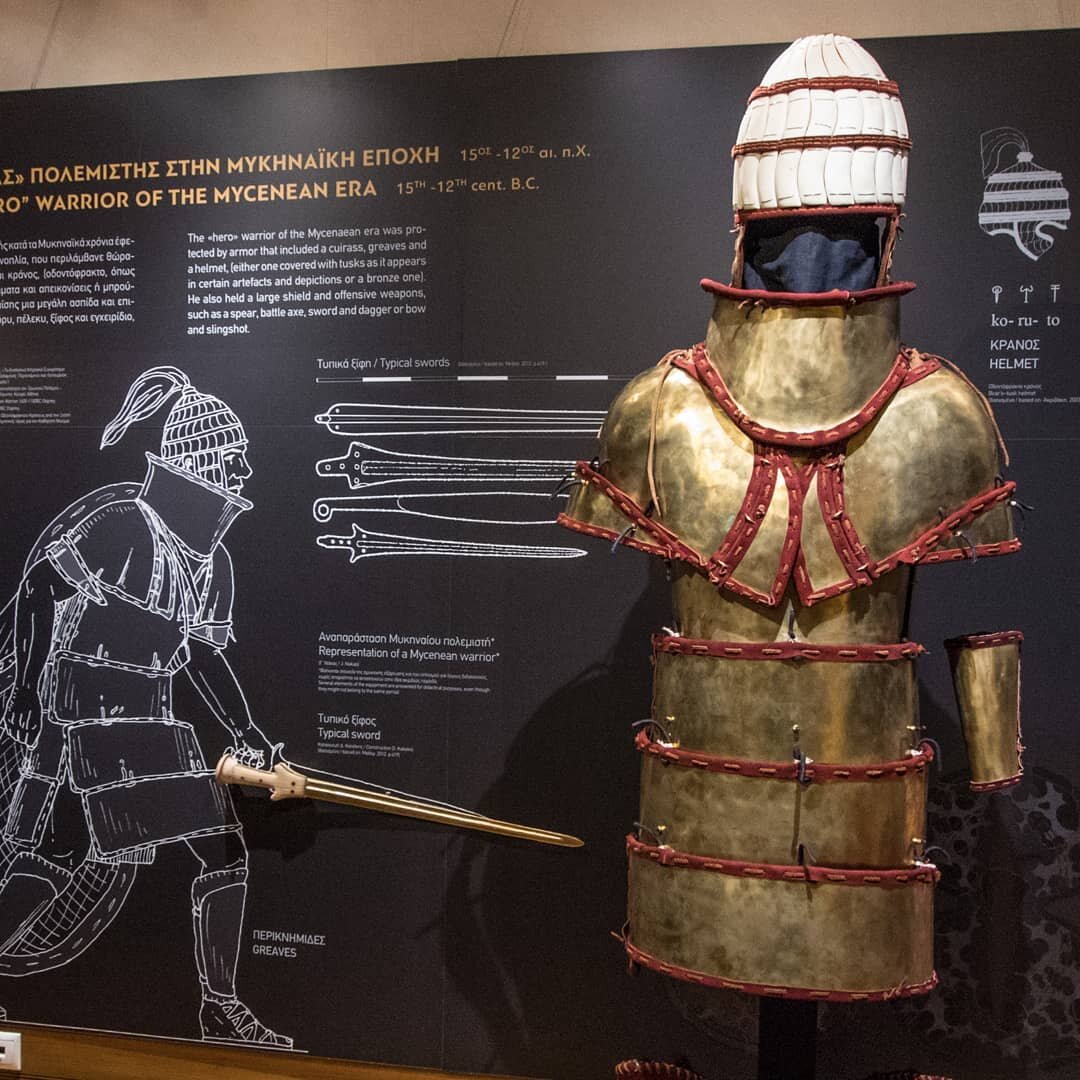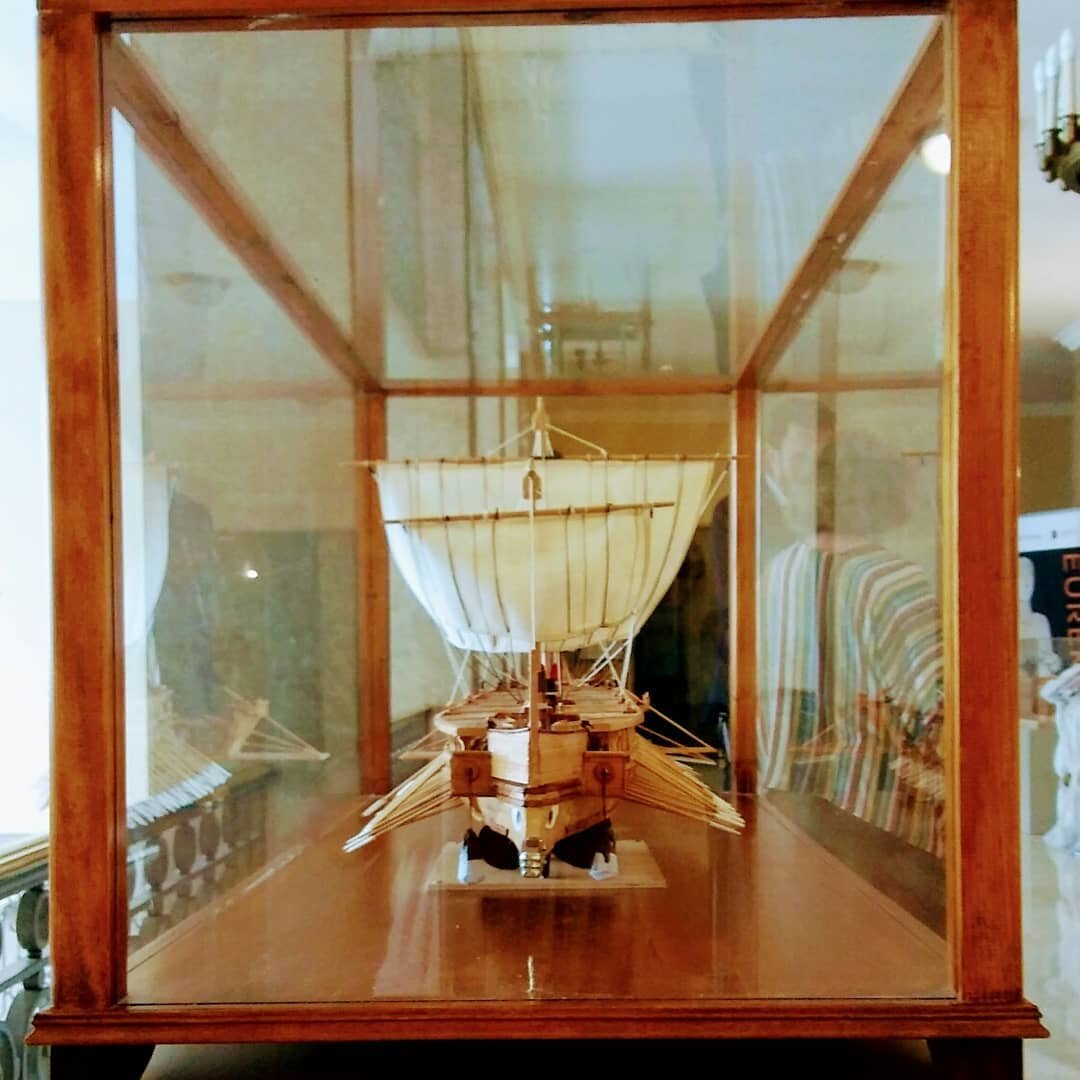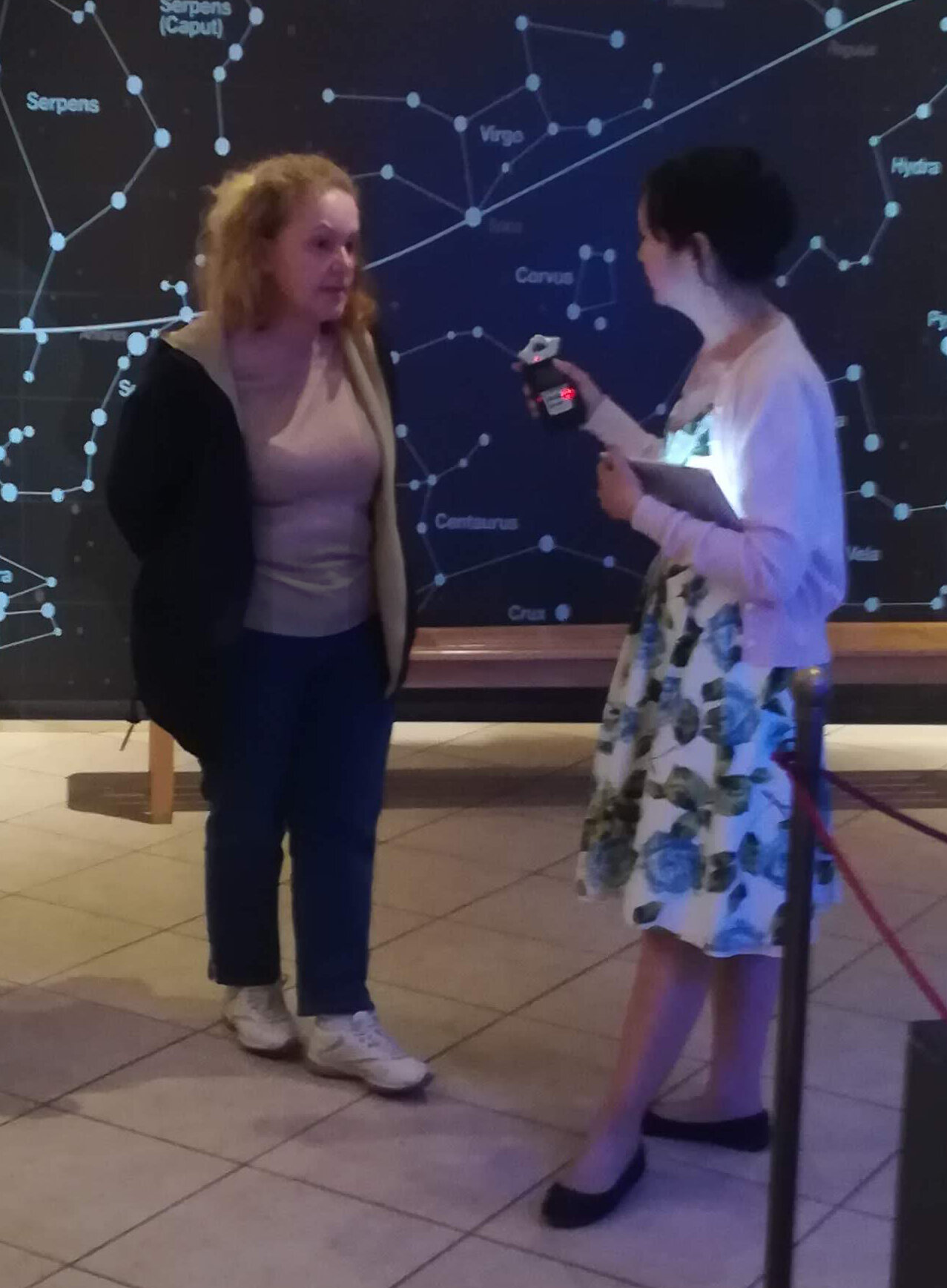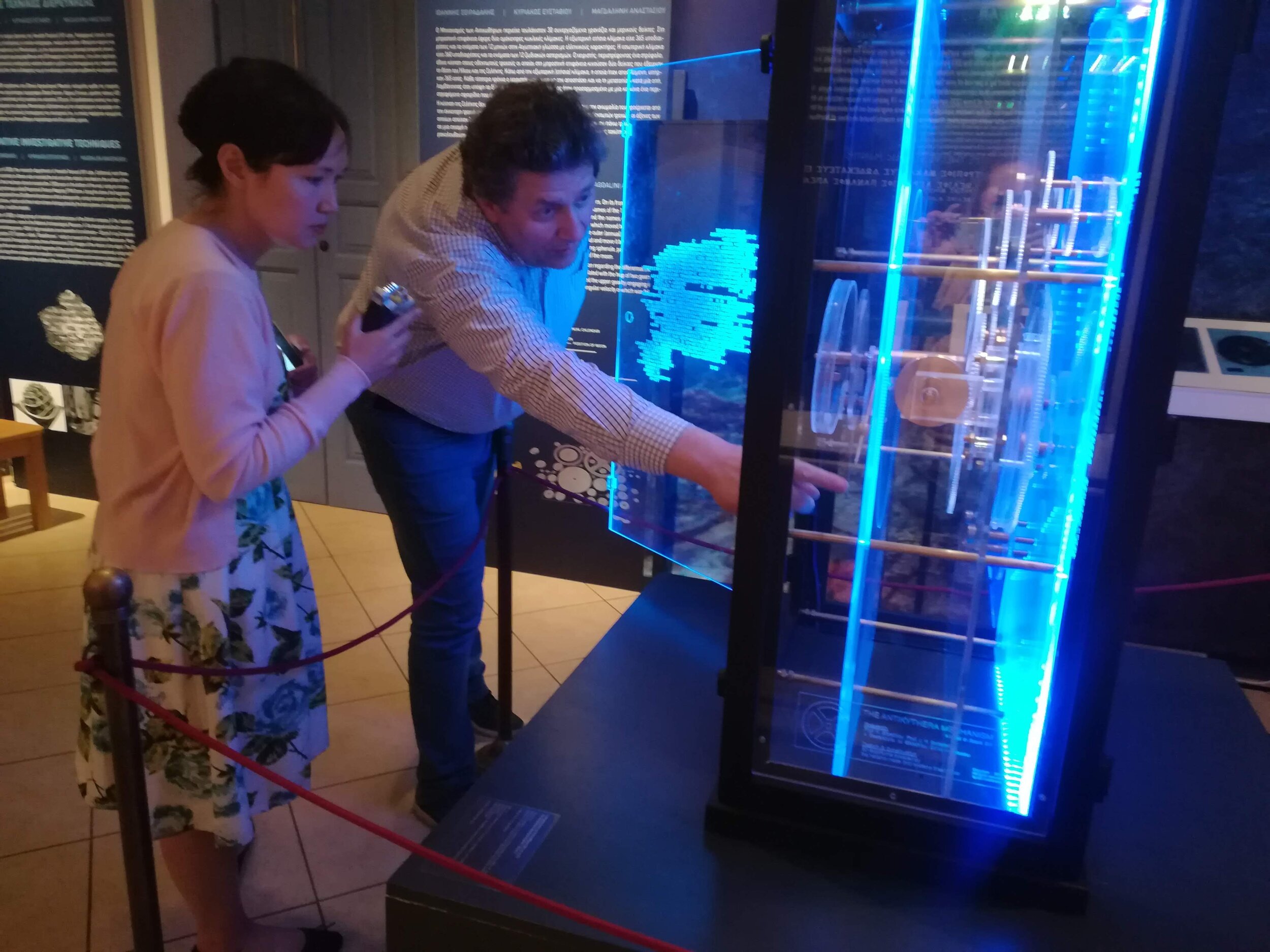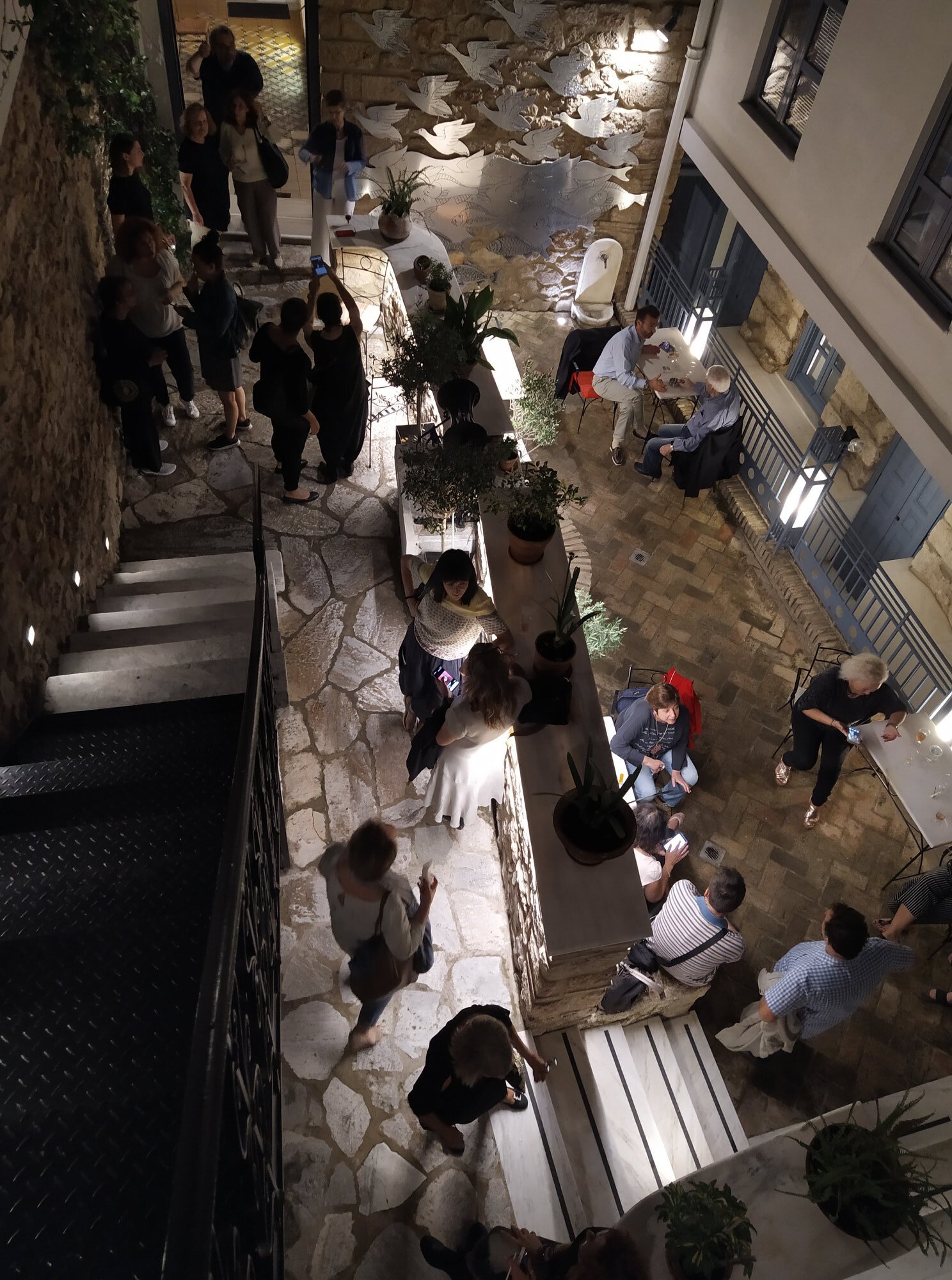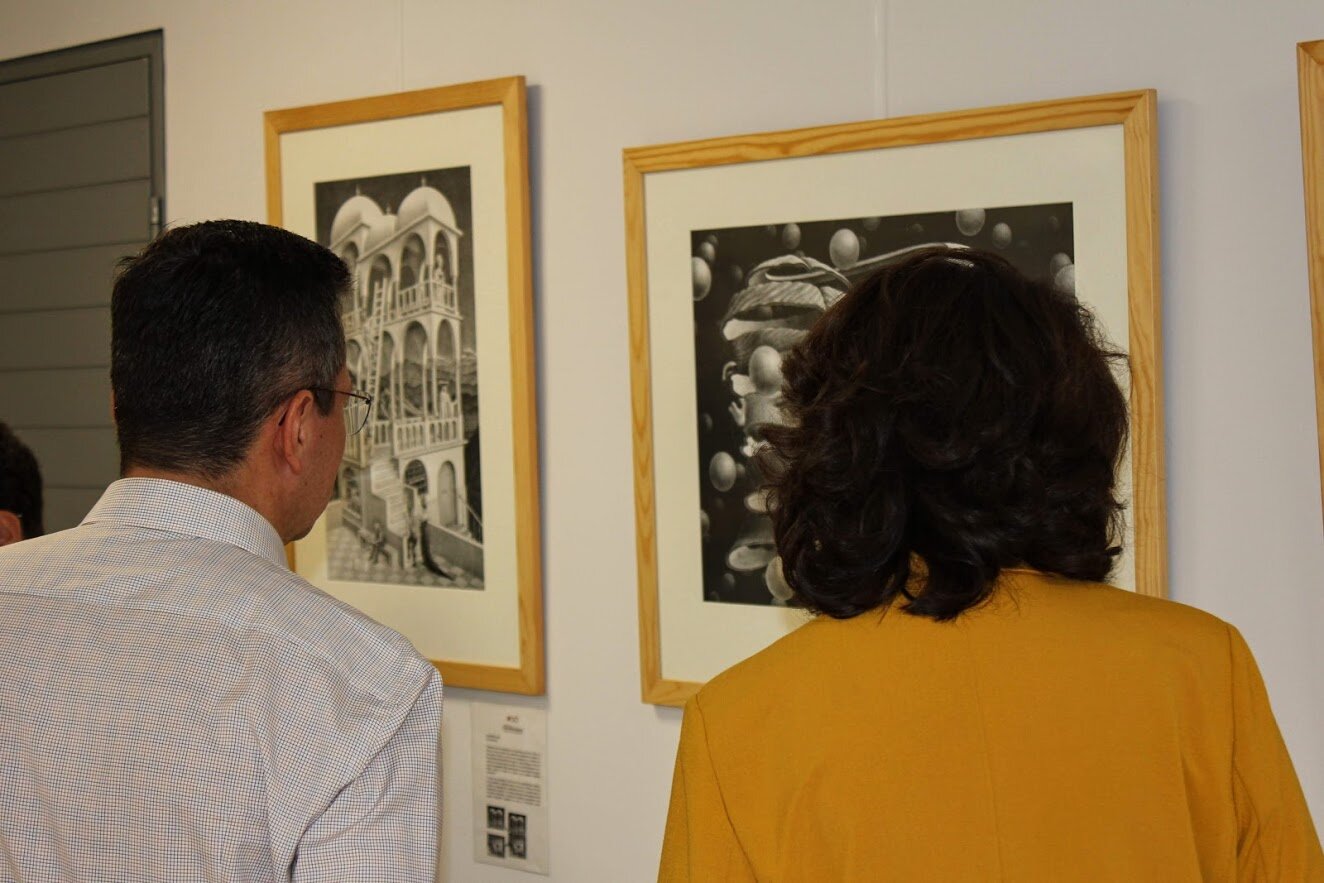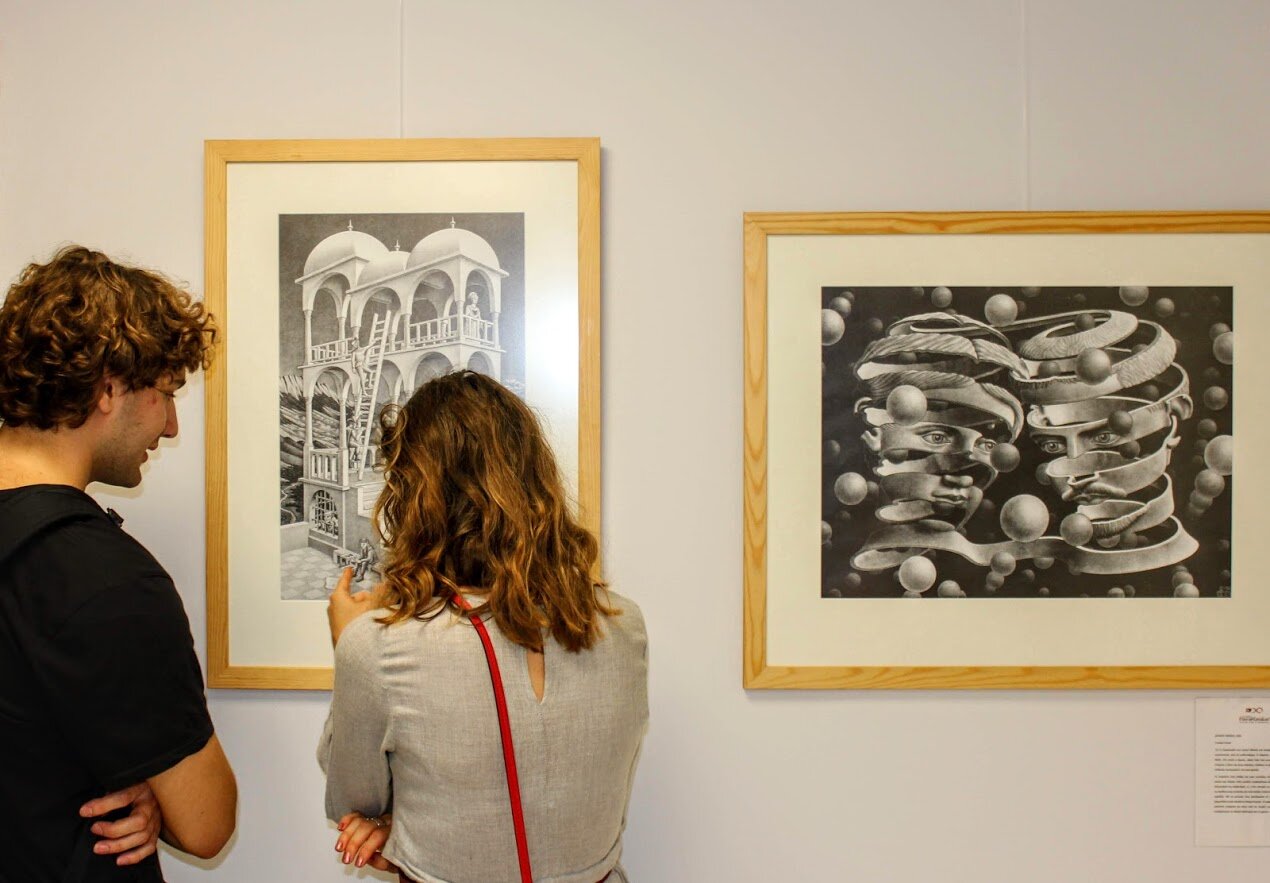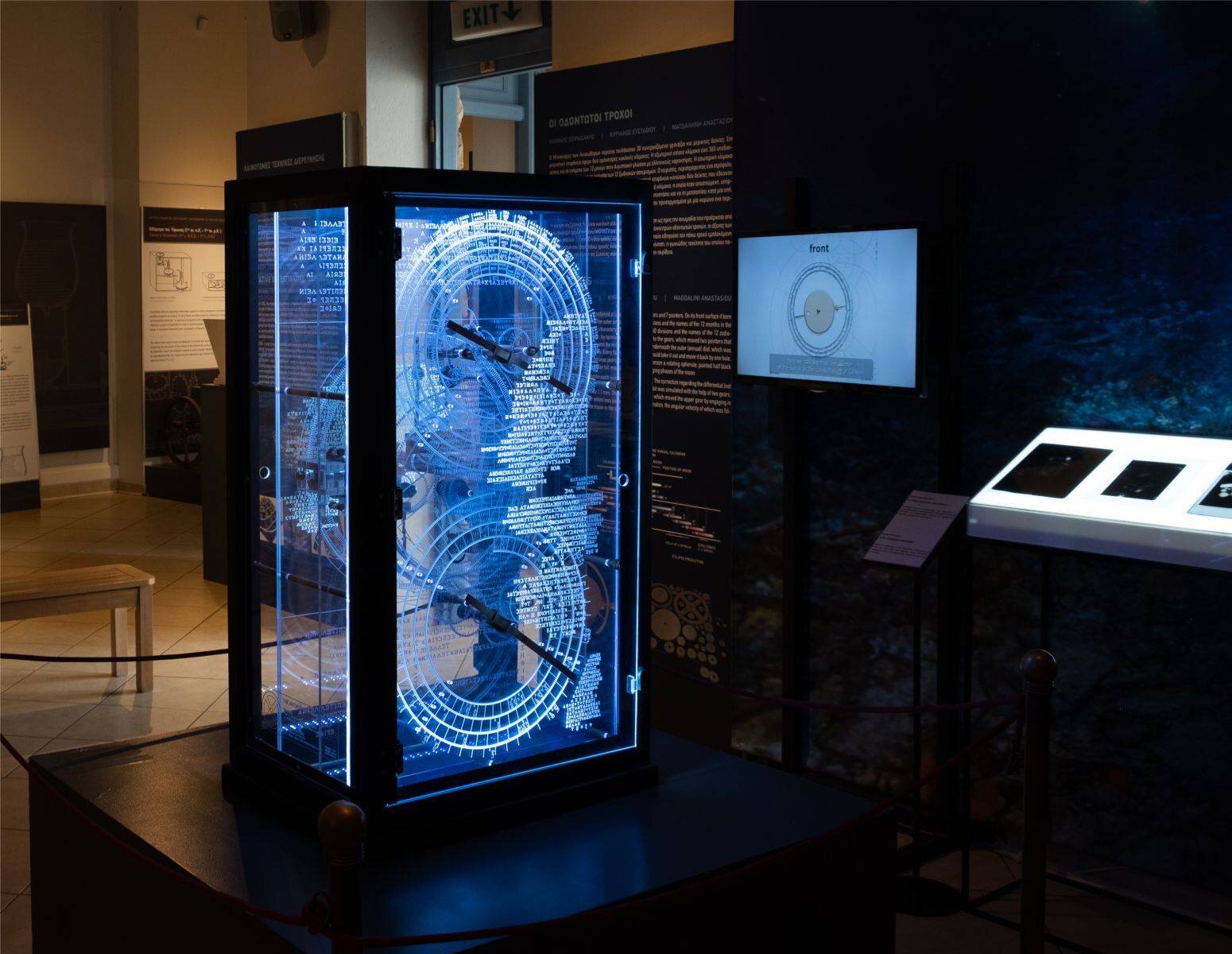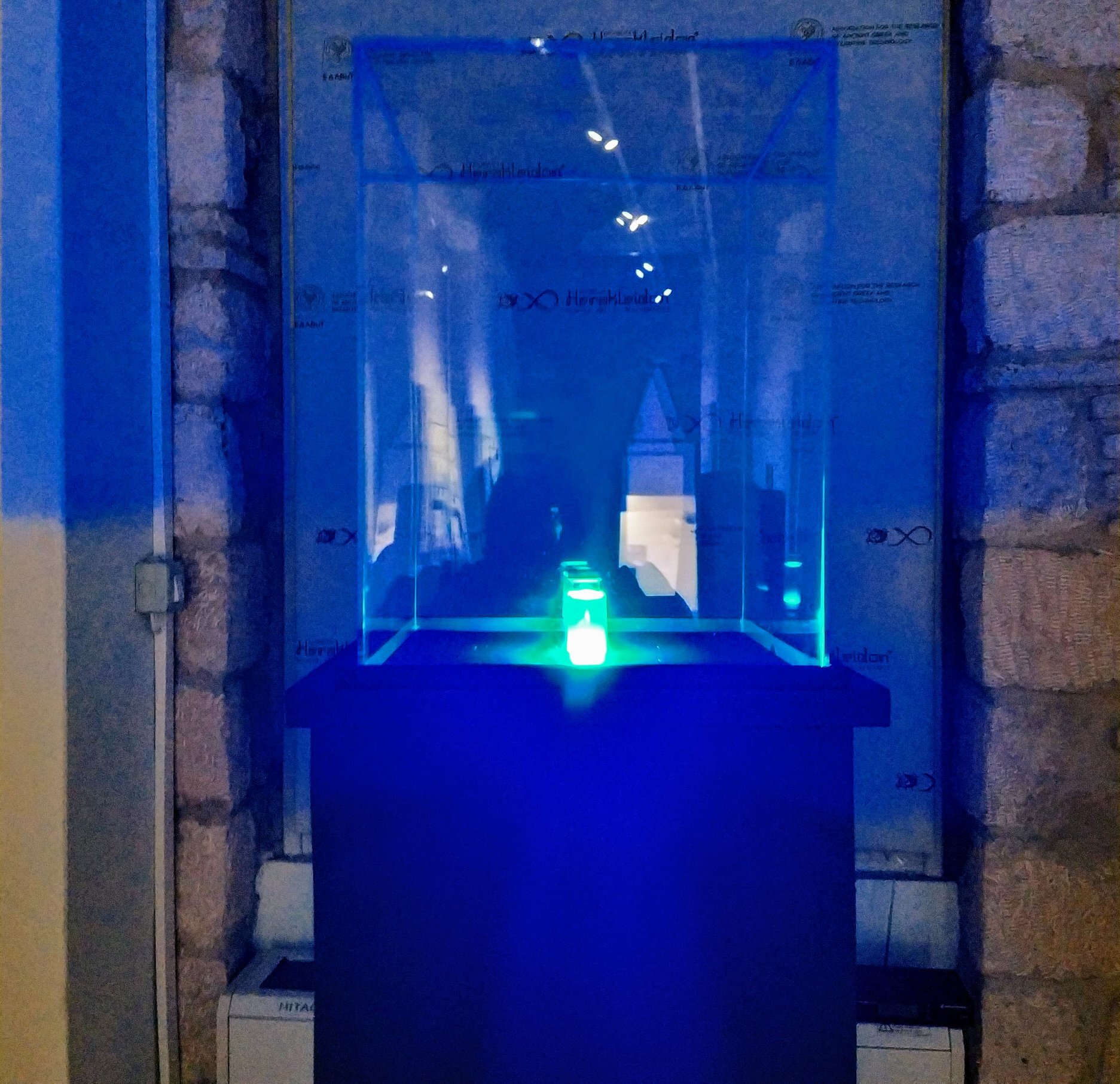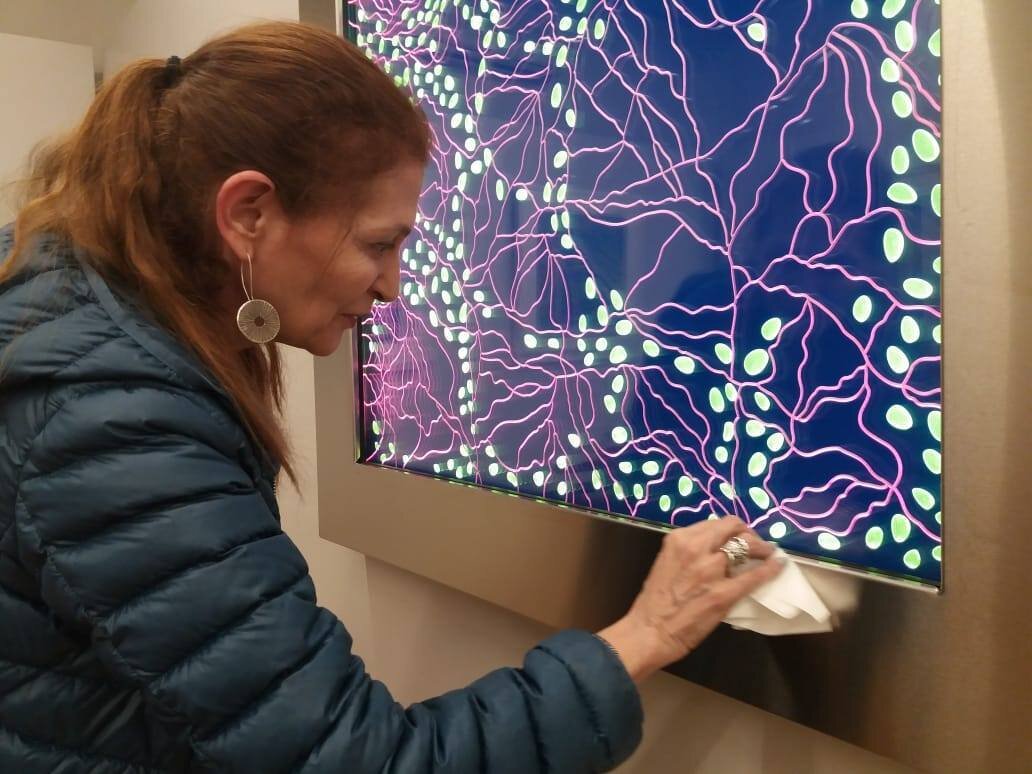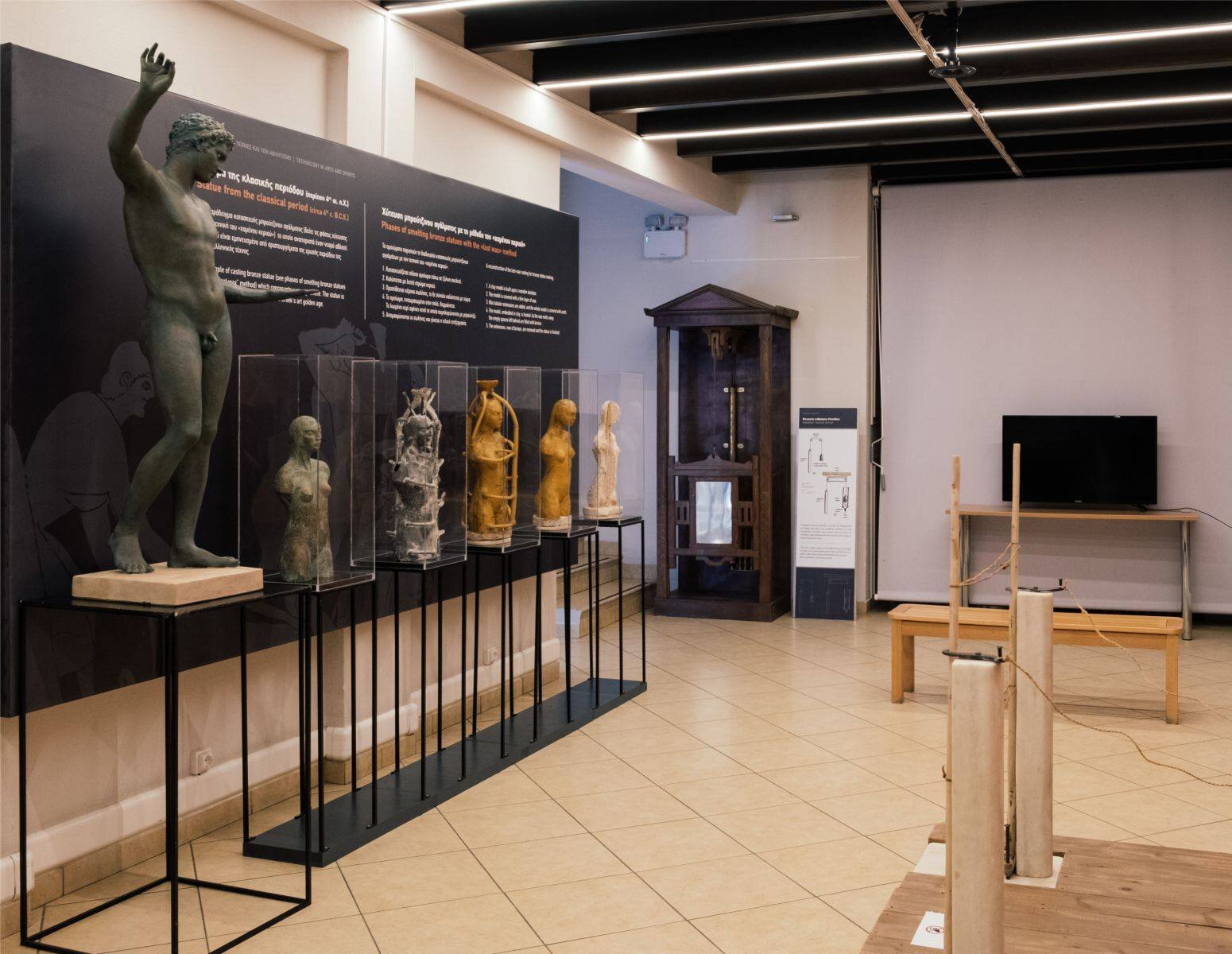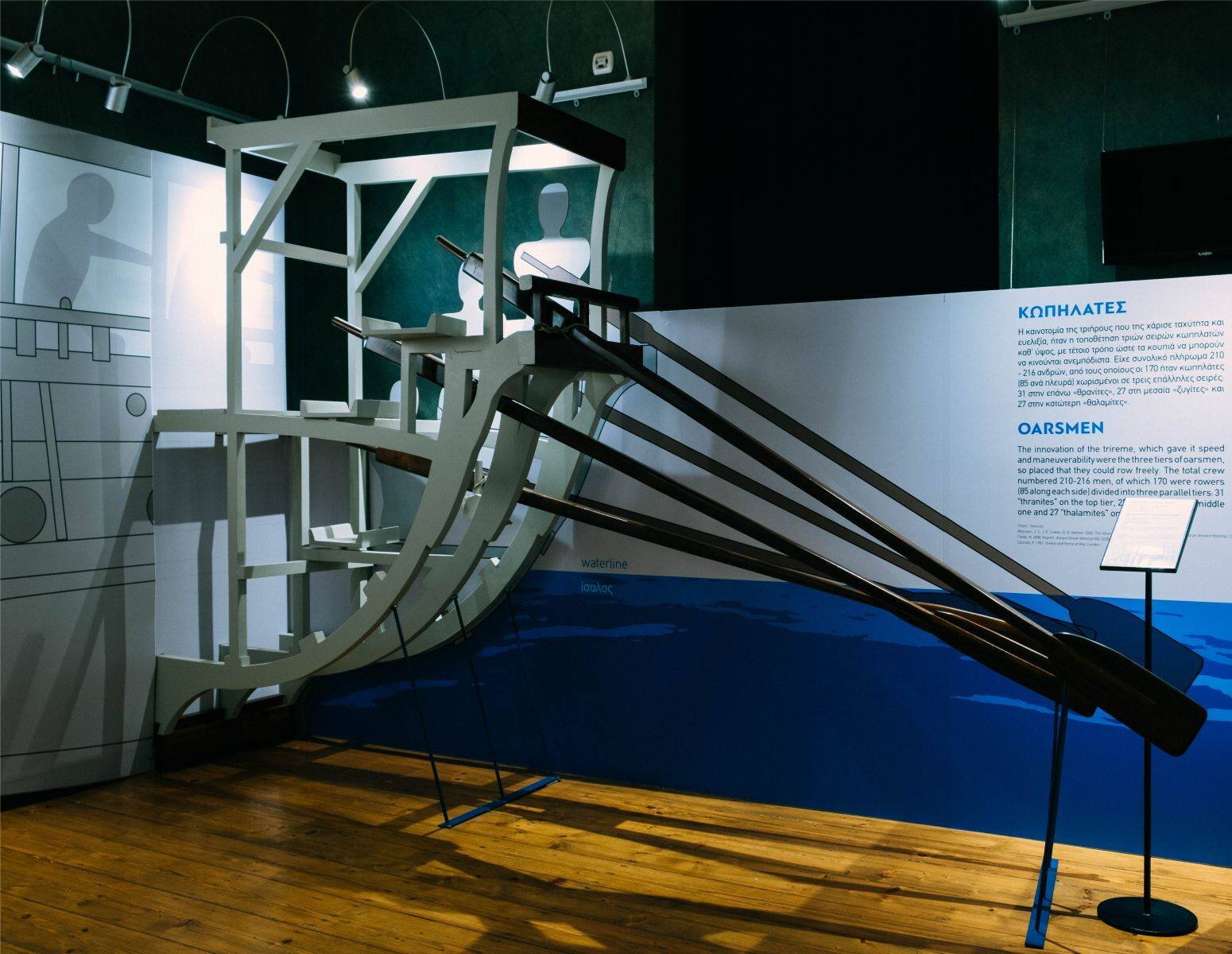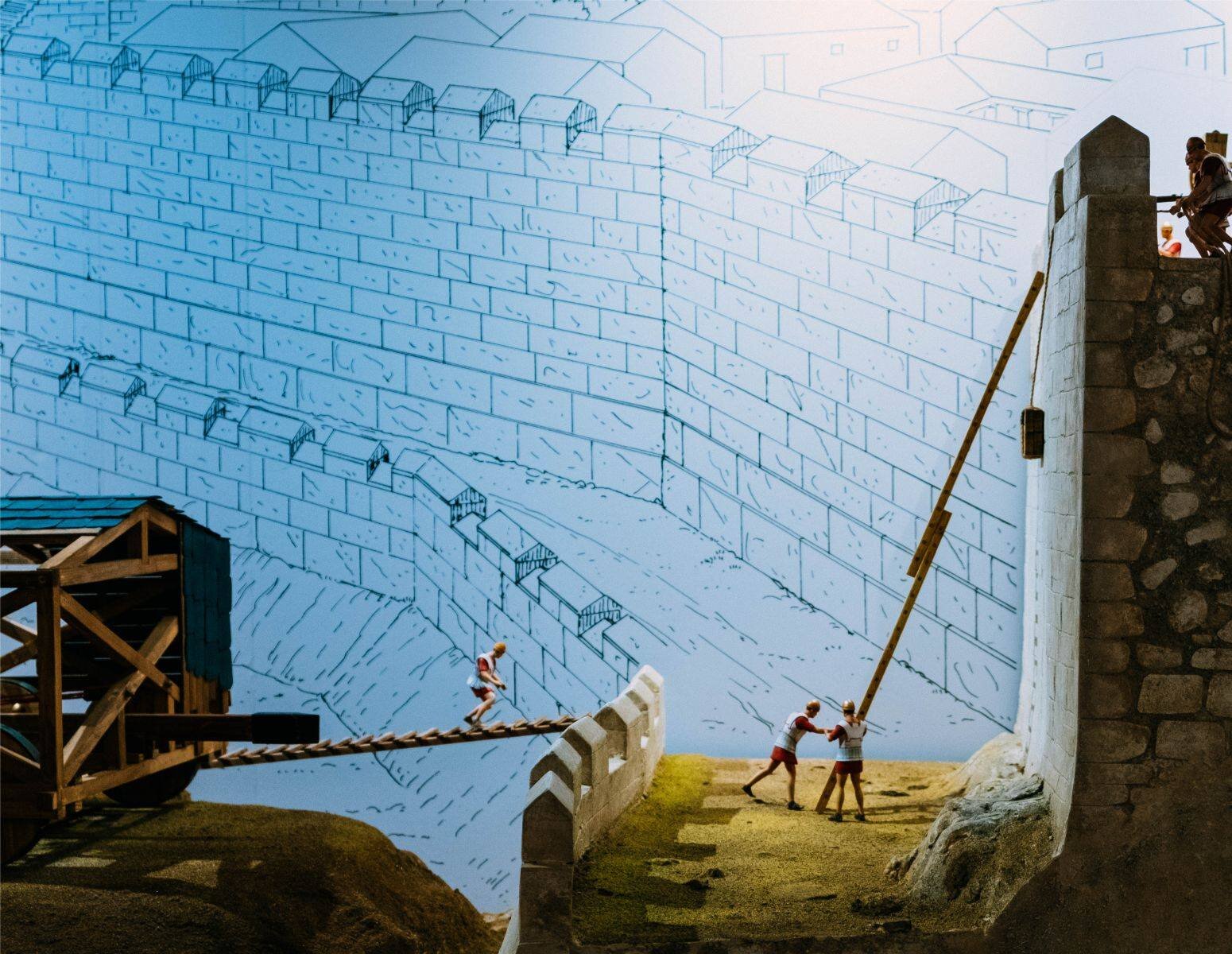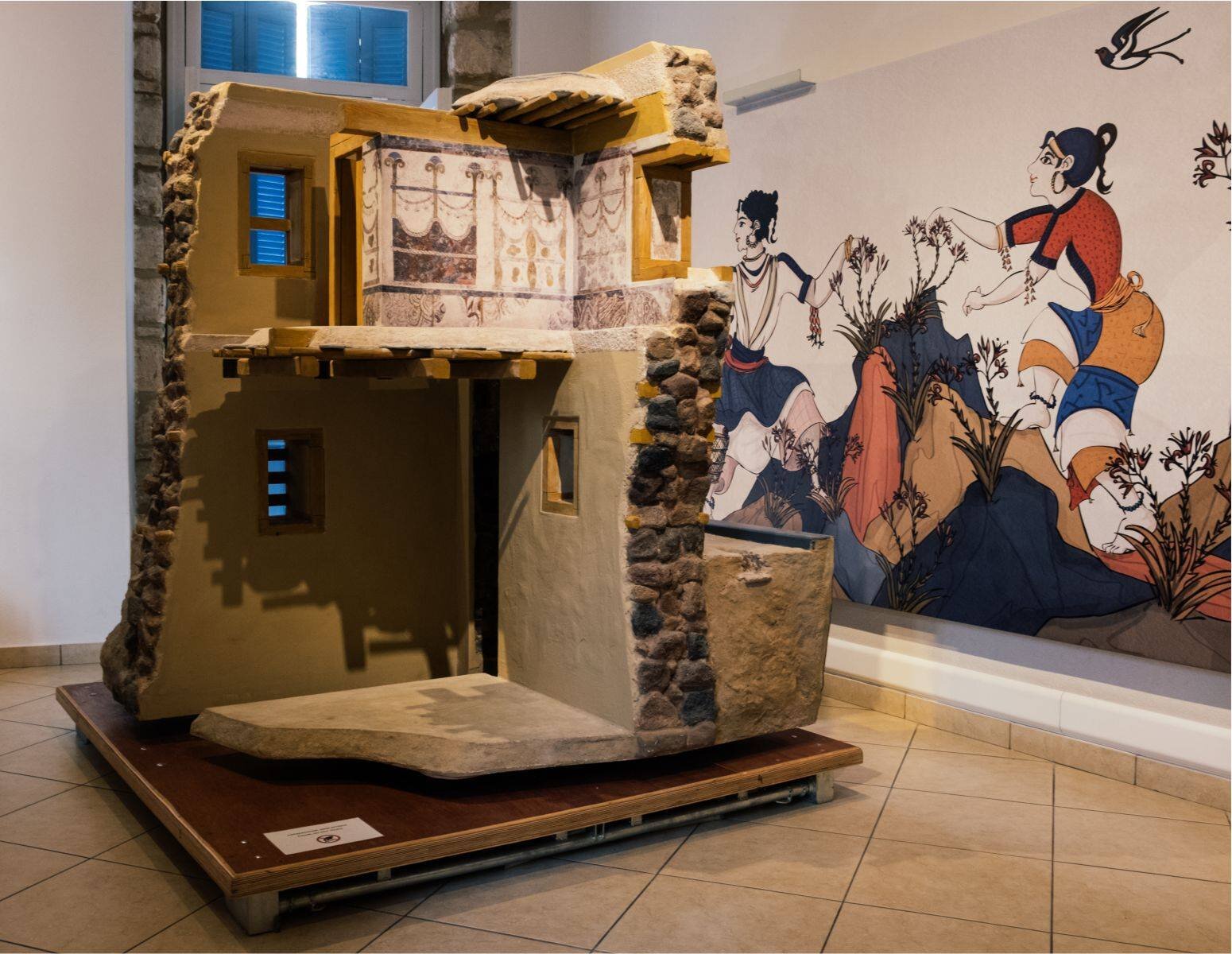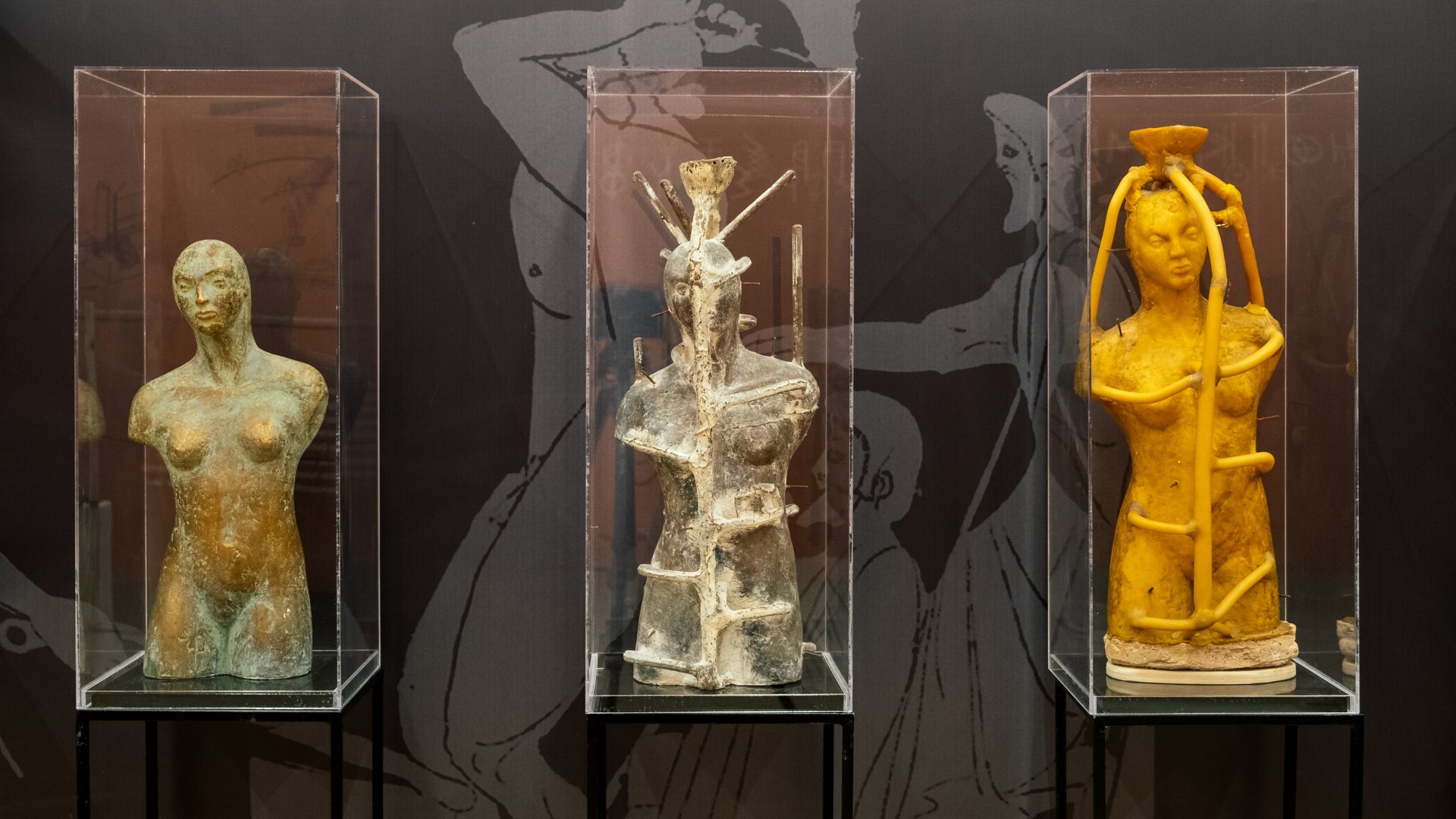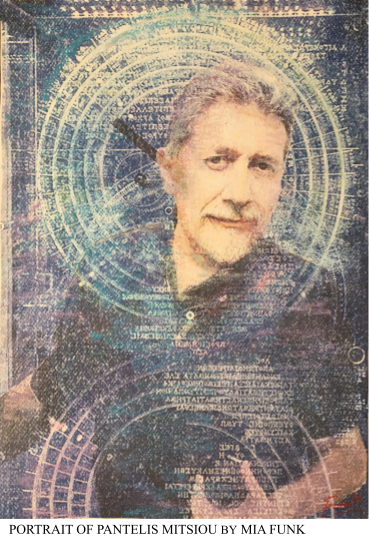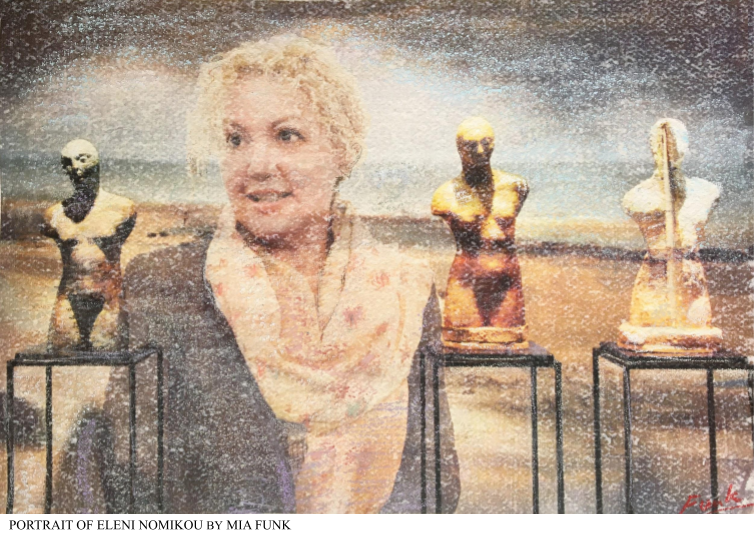The Museum Herakleidon was founded in 2004 by Mr. and Mrs. Firos and extends to two buildings in the historic district of Thissio, next to the Acropolis, the Ancient Agora and the Temple of Hephaestus. The first building is located at 16 Herakleidon str. and the second one 150 meters further, at 37 Ap. Pavlou str., one of the busiest pedestrian streets of Athens.
During the first decade of its operation, the museum focused on artistic activities and organized exhibitions with artworks of great artists such as M.C. Escher, Victor Vasarely, Carol Wax, Constantine Xenakis, Adolf Luther, Francesco Scavullo, Toulouse-Lautrec, Edgar Degas, Edvard Munch, Sol LeWitt and others. At the same time, a plethora of cultural activities allowed visitors to explore the essence of each artist's perspective.
PANTELIS MITSIOU
Communications Director
The founders of the museum Mr. and Mrs. Firos had the vision of creating the museum and of creating a technological museum with its educational program.
They are Greek Americans. They live half the year in the States, half the year in Greece. They love art. They love technology. They love science. They love Greece. They love children.
ELENI NOMIKOU
General Manager
The most important part of our museum is the children.
MITSIOU
They know it and they support us to keep working, to keep doing our job. Mr. and Mrs. Firos was founded it in...
NOMIKOU
In 2004, and for the first ten years was dedicated to art because, uh, the main exhibition was about Maurits Cornelis Escher.
THE CREATIVE PROCESS
M.C. Escher.
NOMIKOU
People knew it as a national museum. And the educational program was about art and mathematics. Besides Escher, the artist we were showing was Degas, Lautrec, Munch, Constantine Xenakis, Vasarely, Carol Wax, Adolf Luther, Francesco Scavullo, Sol LeWitt, and others. Since 2014, the museum has been dedicated to educational exhibitions about science, mathematics, and art.
The first exhibition was a photography exhibition. The Metamorphosis of Athens to celebrate our 10th anniversary.
After this...
MITSIOU
At that the opening, this building was not part of the museum. It was opened in 2014 for the first decade anniversary of the museum.
NOMIKOU
Then we had an exhibition about ancient Greek technology, Klepsis, Naval History and Navigation of Ancient Greece. Then we had an exchange of exhibitions with Ancient Chinese technology. The Eureka Show Eureka.
The whole collection of the museum traveled to Beijing and the two buildings here. This one we are now in the second one showed Ancient Chinese technology. It was a great exhibition. It lasted for about one year. Thousands of visitors, students, programs, shows, events, tea parties. It was great. Also, Eureka had wonderful shows not only in Beijing but in other cities Shandong and Jinan.
And in August 2018, Eureka returned to its home, and the first sections we are showing because the whole collection is very big, about 60 exhibits and counting, because we are creating more and more with the help of Mr. Tassios.
We create exhibits any chance we have. The first section of the Herakleidon building celebrates the Antikythera Mechanism. And here at the Apostolou Pavlou Street is about the war technology of ancient Greeks.
MITSIOU
The exhibit on this floor focuses on mythology. Here we can see Hephaistos the god of fire, the technological god of Ancient Greece that made some weapons for the shield and helmet of Achilles.
Hephaistos gave them to Thetis, the mother of Achilles. The most amazing part of the panoply of the armor of Achilles, as described by Homer, is his shield. And Homer dedicates more than one hundred and thirty lines in The Iliad for describing the shield of Achilles. They said that it's made from three parts. It's copper, gold, and tin. It does, Homer says, when Aeneas hero of Troy throws a spear against Achilles, he could not pierce the shield for the layer of gold. Gift of the god. They say it just pierced the first layers made of copper, but you cannot pass the golden part of the shield. Let's say that this is a myth.
But Professor Pipedes made an experiment using a model in a computer of a shield made by copper, gold, and tin. And he surprisingly saw that the spear could not penetrate the shield. So we have a myth that comes true. Know that most of the properties of the shield were its form, not its layers. The form of the shield is hard to be penetrated. So this is mythology and technology. We combine it and we can explain to children that it contains part of truth... You can find truth in the myth, but it's scientifically explained.
THE CREATIVE PROCESS
It's so important. And everywhere in Athens, I think is this sense of history and myth, but we built our realities on them. We have we are living with these archetypes around us, and we meet these archetypes, too.
MITSIOU
We need it. And in some places or some aspects of technology or our lessons, we leave some myths because children need a myth to build his personality and also to create inventions like this.
THE CREATIVE PROCESS
If you don't have a dream...you have to dream first.
MITSIOU
Exactly. We have to make them... to wake a spirit of creating...
NOMIKOU
...and searching and wondering why.
THE CREATIVE PROCESS
It's so nice because as you said, you read these epic poems, but it's nice that you can see, "Oh this is how it may have been acted out."
NOMIKOU
The spirit of miriousness.
MITSIOU
So this is a thorax. It's rather interesting to see how it was written in Linear B, the way that Mycenaeans wrote four thousand years ago.
Thor-a-kay. In Greek, Thor-a-kas. Thorax. It's a word that has survived for four thousand years. This is a copy of a Mycenaean thorax. It's made from bronze, copper, and tin. It covers the whole body of a soldier. The helmet was made from whale teeth. It's not offering something in the helmet itself. Amazing to see someone wearing this.
THE CREATIVE PROCESS
We should describe these whale teeth. They're curved into this wonderful spiral shape, they're curved...
MITSIOU
Like a wave. It goes to the top like a wave. This one is made from plastic, but the rest of the armor was made using the technique of the ancient Greeks. Only a hammer and nothing else and fire and fire.
So this is a tin and copper thorax armor. We have to know that in these times, during this period, neither copper nor tin was found in Greece. Copper comes from Cyprus and the name of Cyprus means copper. And tin comes from Afghanistan or Cornwall, Britain. So they had connections and trade between the Far East and the Far West. That means that people during this time, 2000 years, B.C., they have traded with their connections.
THE CREATIVE PROCESS
It's hard to take it in. We were already so globalized with those amazing ships, you could accomplish things like that.
NOMIKOU
Mr. Tassios says that the ancient Greeks had technology in their DNA. And you can understand this in their religion because, they had a god for technology, Hephaistos. I remembered it while we are discussing this shield and thorax. They were made with fire and a hammer. And this was doing the work of the god Hephaistos.
MITSIOU
His characteristic tool was a fire and a hammer.
THE CREATIVE PROCESS
A powerful image. I want that to be my symbol!
MITSIOU
This is how the weapons evolved over the centuries. This is a typical form of a soldier from the third century B.C. It has enamel made of leather and there is a lining...
The war in this period. Ancient Greeks, let's say Mycenaeans, thought that war is work for a man who confronts another man. So the physical power matters, but as the years go by, they use powers so you can kill someone from a distance. So you can you have to move fast, hit and run. So might is preferable to physical power.
THE CREATIVE PROCESS
And during this period, young men were being conscripted? They were entering this kind of life at what age?
MITSIOU
It depends. In Sparta, from seven years old. The state separated the child from his mother, from his family, and he becomes a soldier from the age of seven. It was the job of the state to raise the child, not of the family. In Athens, it was completely different.
In Athens, they just gathered soldiers if they needed them. They called for soldiers if they had a war, and then they go there. They have a fast education in weapons and that's it. But in Sparta, it's completely different.
THE CREATIVE PROCESS
Would you send your son to prepare for war at seven? Is it hard when you bring the children to this exhibit?
MITSIOU
I think that children love Spartans more, especially boys because they think that they were heroes and bodybuilders, etc.
NOMIKOU
Athenians were more sophisticated, but they won the most important wars.
THE CREATIVE PROCESS
Yes, with that strategy and distance.
MITSIOU
So let's say mind is preferable to physical power, even in war.
NOMIKOU
Democracy was what won the wars. Athenians had Democracy.
MITSIOU
The soldiers of Athens had too many things to lose, especially freedom for themselves. So it was easier for them to fight or they wanted more. I don't know.
THE CREATIVE PROCESS
You know, I think it does motivate. Democracy. Diplomacy.
MITSIOU
These are the big weapons of ancient times. The catapult. This one, it's from the fourth century B.C. It throws arrows and even stones. If you place a stone with this handle made of leather you can throw a stone from here.
THE CREATIVE PROCESS
Eleni Nomikou, what you did is very interesting. After you ended your time in banking, others would maybe just retire and relax, you decided that you were going to go back to school.
NOMIKOU
Yes, because I fell in love with the museum and art and the people working here, not only here, but in this sector. It's true, you have to be good with numbers to run a museum, not only be good at art and science.
MITSIOU
One of the most amazing artifacts, inventions of the Ancient Greece. This is a model, a reconstruction of the Antikythera Mechanism. It's three times bigger than the original. And you can see it was really used. This is a pointer for the moon, the pointer for the sun here. Three hundred and sixty-five lines for the days of the year, and here is the Zodiac cycle, Aries, Pisces, Leo, Virgin, Scorpio, Sagittarius...and you can see as the moon moves, the sun moves, too, and you can see the relative position of moon and sun in the sky for every time of the year.
So someone can say when the moon is in the last day of Virgo, the sun will be in the last day of Cancer.
THE CREATIVE PROCESS
It's such a beautiful mechanism.
MITSIOU
It becomes even more complicated when the moon and the sun are aligned, then you can have an eclipse. And then you come to the back of the mechanism in the eclipse spiral. When it's here that has nothing, then you do not have an eclipse. If it here, it has a sigma, its Selene (moon in Greek), so you will have an eclipse of the moon.
THE CREATIVE PROCESS
And they figured all this out by three of 100 B.C.?
MITSIOU
And not only that, you will have an eclipse of the moon, but here it's two letters combining Omega Óra. It means time. So, you know, the exact hour of the day that you will have an eclipse. It has been tested. It's exact until now.
THE CREATIVE PROCESS
Oh, it's so beautiful. I can't even imagine trying to figure that out now with all the with all the technology I have at my fingertips.
MITSIOU
You can see the great games of the ancient Greeks, Olympic Games, Isthmia in Corinth, Nemea or Pythia in Delfi. The great games of the ancient Greeks. It shows when and which month will be every one of these would be hosted.
THE CREATIVE PROCESS
So that wasn't the whole reason for it, just to make sure they had good weather for the games? (laughs)
MITSIOU
They say that there was another part, but we have never found it that shows the movements of the planets because here we have the sun, the moon, and the Zodiac cycle, but not planets. So we think that it had a second part that has never been found with a small planetarium.
These are the original models from Dr. Derek de Solla Price, a British mathematician who lived in the States who was the first one that figured out what was the Antikythera Mechanism, the Gears from the Greeks.
THE CREATIVE PROCESS
For which he won the Leonardo Da Vinci Medal.
MITSIOU
The first model was made in a cigar box using cardboard. It's from 1951.
NOMIKOU
Yes, between 1951 and 1954.
MITSIOU
And then he made some models bronze and Plexiglas in the 70s.
NOMIKOU
And he joined, here at the National Museum of Athens, the Mechanism with X-rays.
MITSIOU
X-rays and gamma rays with the collaboration of Professor Karakalos a Greek nuclear physicist.
NOMIKOU
That's how they showed that there were gears inside.
THE CREATIVE PROCESS
As technology is changing the way we're communicating with ourselves and our imaginations, we're advancing, accelerating at that enormous rate. What do you think, even as you're celebrating technology and engineering, what are those things you feel we should remember about the past?
MITSIOU
I think that ethics has to run a little bit faster to not be overcome by technology. I think that we have to keep our human values, and we have to remember that we have a history of wars and technology, yes, but we also have a history of creating art and literature and other things that have remained through the centuries. So we love to follow technology, but we have to remain people, human.
NOMIKOU
Yes, and children learn here that they always have to trust their minds. Orthological way of thinking and all of these artifacts were made from humans. This means that they must not stop trying and searching.
MITSIOU
And they also have to remain humans. They have to keep their values.
NOMIKOU
Don't only use technology. Create technology.
THE CREATIVE PROCESS
Exactly. It's wonderful. This whole museum is really a celebration of imagination and creativity. So thank you both for that beautiful message and what you've created here with the Herakleidon Museum. Thanks so much for adding your voices to The Creative Process and for encouraging the next generation of creators, inventors, artists.
NOMIKOU
We thank you. Our pleasure.
This interview was conducted by Mia Funk with the participation of collaborating universities and students. Associate Interviews Producer on this podcast was Nina Hook. Digital Media Coordinator is Hannah Story Brown.
Mia Funk is an artist, interviewer and founder of The Creative Process.




